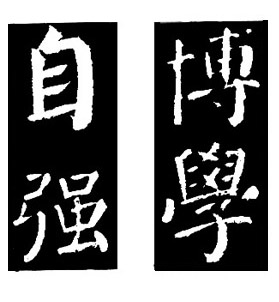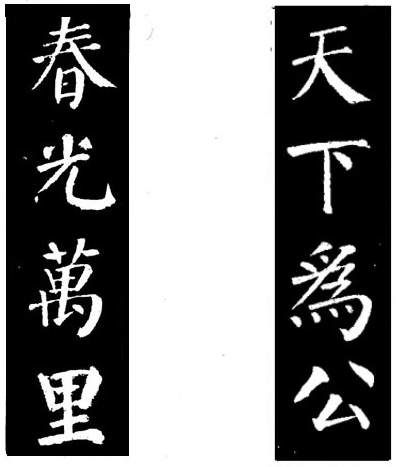Analysis of Yan Zhenqing's "Yan Qin Li Stele" Techniques
(1) Introduction to Yan Zhenqing's life
Yan Zhenqing (709-785 AD), the word Qingchen, the other name is Yingfang. Langyepi was born in Linyi (now Linyi, Shandong Province) and was an outstanding calligrapher in the Mid-Tang Dynasty. He used to be the prefect of the plain, the official to the prince and the young teacher, and was named the governor of Lu, so he was called "Yan Pingyuan" or "Yan Lugong". . Yan Zhenqing is a little diligent and eager to ask questions, is good at diction, and is fond of books since childhood. In 742, 34-year-old Yan Zhenqing was appointed Liquan County Lieutenant. During his time as an official, he showed outstanding political talents, loyalty to the ruler, love for the people, and upright character. At the age of 74, Yan Zhenqing was framed by a traitor. At the age of 77, Yan Zhenqing was hanged and killed.
(2) Yan Zhenqing's calligraphy style characteristics
Yan Zhenqing is erudite and proficient in ci and essays. In his early years, he studied under Zhang Xu's school, and he also studied elder calligraphers such as Cai Yong, Wang Xizhi, Wang Xianzhi and Chu Suiliang. The representative works of this period are "Duobao Pagoda Tablet" and "Dongfang Shuo Painting Praise". In the middle period, Yan Zhenqing used seal characters to write scripts, and gradually formed a strong and majestic style of calligraphy. The masterpieces of this period include "Manuscripts of Sacrifice to Nephew", "Site Fighting Post" and "Guojiamiao Stele". In the later period, Yan characters became more perfect, with simple and rich brushes, natural composition and magnificent momentum, which established his irreplaceable position in the history of Chinese calligraphy. The representative works of this period include "Song Guangping Stele", "The Story of Magu Mountain Immortal Altar", "Ode to the Zhongxing of the Tang Dynasty", "Li Yuanjing Stele", "Yan Qin Li Stele", "Yan Family Temple Stele", "Self-written Tie" and so on.
Yan Zhenqing's book style is dignified and unrestrained. It has become a magnificent and powerful body, forming a "yan style" dominated by "jin". Therefore, for more than a thousand years, he has been praised by the world as "yan" together with "liu style". Muscles, willows and bones" has become a classic work in the book world.
(3) The characteristics of Yan Zhenqing's calligraphy pen
Yan Zhenqing's calligraphy has become a model for center forwards because of the use of the seal calligraphy. The pen is strong and powerful, with built-in strength, the pen is more hidden in the front, and the back is more in the back, especially the round pen at the beginning of the pen is far more than the square pen. The horizontal painting is light but the vertical painting is heavy (the contrast between horizontal, thin, vertical and thick in "Yan Qin Li Stele" is very strong), but when the two verticals appear at the same time, the left vertical is as thin as the horizontal, and the two verticals are arranged facing each other (that is, the arch is facing outwards). ); The turning pen is often used to lift the pen, the circle turns straight down, instead of turning the pen, the turning pen is mostly outside the circle and inside the square, and so on. It is worth noting that when practicing the Yan body, one should not blindly emphasize its strong side, while ignoring the main characteristics of the thick, vigorous and strong pen of the Yanzi stippling pen.
(4) Introduction to "Yan Qin Li Stele"
"The Stele of Yan Qin Li" is a Shinto stele (tombstone) written by Yan Zhenqing for his great grandfather Yan Qinli. It is engraved on all sides, and it exists on both sides and one side. There are 19 lines in Beiyang and 20 lines in Bei Yin, with 38 characters in each line. There are 5 lines on the side of the stele, each with 37 characters, and the inscription on the left has been polished off in the Northern Song Dynasty. It was unearthed in Xi'an in October 1922 and moved to the new city, now Xi'an Forest of Steles.
"The Stele of Yan Qin Li" was written by Yan Zhenqing in his later years. Its calligraphy art has entered a period of full maturity.
Chapter 2: Analysis of Basic Brush Method
The basic strokes of Chinese characters are a little bit, horizontal, vertical, abbreviated, pinned, folded, hooked, and picked. Basically, no matter how complex the strokes are, they are derived from these basic strokes. Strokes are the basic elements that make up Chinese characters, and they are also the "basic skills" that beginners must study diligently. Only when they have a solid basic skills can they prepare for future learning.
Here is a summary of the basic strokes of "Yan Qin Li Stele" and some of the strokes derived therefrom. Beginners can practice carefully and focus on their own characteristics.
(1) Point and point change
The ancients said: "A point is like falling a rock from a mountain." So the point should be powerful. Yan body's dots are thick and full, full of energy.
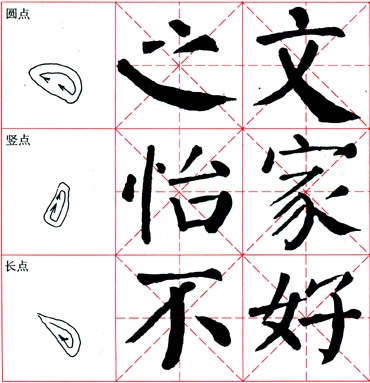
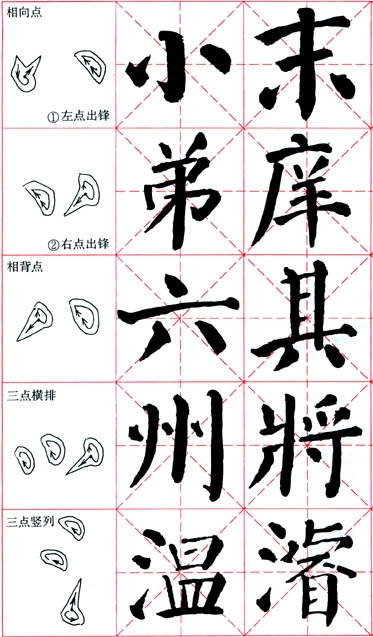
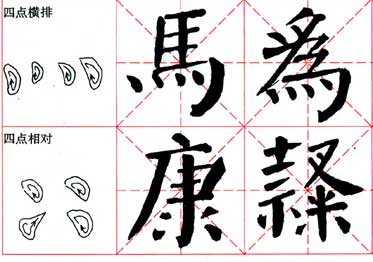
(2) Horizontal and horizontal changes
The horizontal paintings of the Yan body are rich in variety and demeanor. Either it is as long as an euphorbia but not cumbersome, or as short as a stipple without being cautious, or as thin as a hairless but not frivolous, this is all due to Yan Zhenqing's use of seals and good pen.
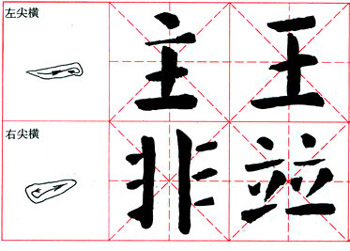
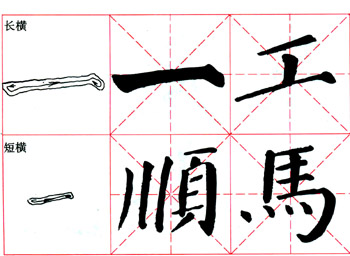
(3) Changes in skimming and skimming
The speed of painting and pen can be fast or slow, but it should be slow and not heavy, fast and not frivolous. And to force the pen tip to prevent the "rat tail" from appearing on the strike.
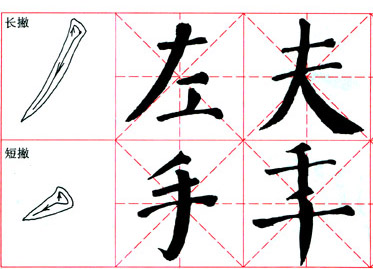
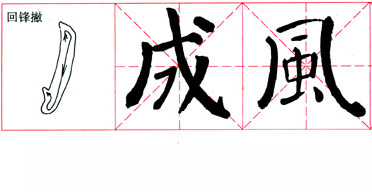
(4) Changes in Na and Na
The Yan body's brushwork is thick and powerful. After entering the pen against the front, it gradually becomes heavier. After the stroke is paused, the front gradually emerges and ends. The entire process of strokes is naturally connected. Beginners must carefully try to figure out how to use the pen, and not write it in the form of "lifting feet".
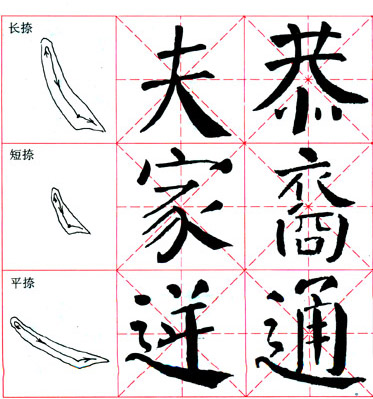
(5) Vertical and vertical changes
The vertical paintings of the Yan body are strong and strong, and usually draw four-fifths of it. The middle vertical is vertical, the left vertical always arches to the left, and the right vertical arches to the right.
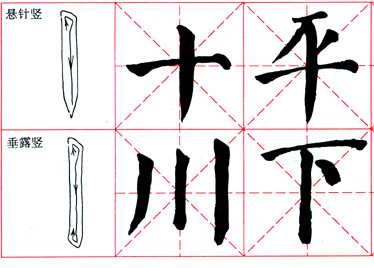
(6) Discounts and discounts and changes
The folding pen of the Yan body usually has no obvious corners, and sometimes it is even rounded when the pen is lifted. When there is a corner, it is written as a corner with a square in the circle and a square outside the circle.
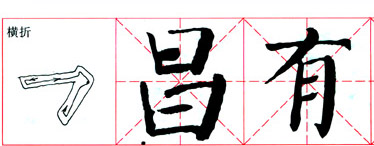
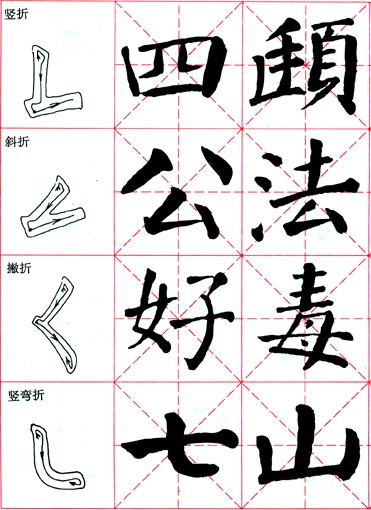
(7) Changes in hooks and hooks
Yan Ti's hook paintings are mostly hooked out after the Huifeng pauses the pen to gain momentum. Although the hooks are short, they are not slack at all. Sometimes the hook paintings seem to be unhooked, implicit and deep.
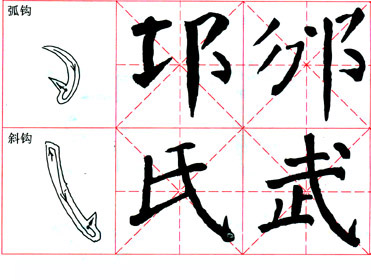
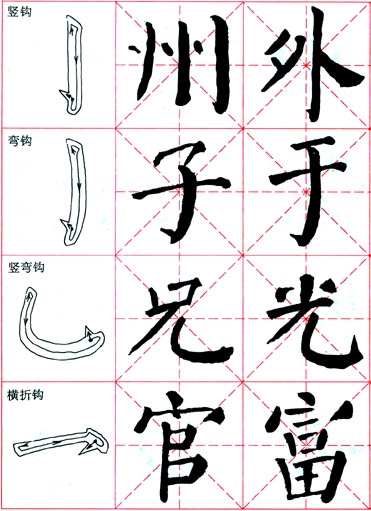
(8) Change of pick and pick
Picking pens usually enters the pen against the front, picks it up after accumulating the pen, and the pen must not be too slow, and the pen must be forced to the tip of the pen, otherwise there will be "rat tails".
Chapter 3 Analysis of Radical Radicals: Changes in Prefixes
There are more than 5,000 commonly used Chinese characters. Most of so many Chinese characters are composed of some basic radicals. Writing the radicals is the only way to write Chinese characters. Here is a summary of the common radicals in "Yan Qin Li Stele", including the initials, bases, left radicals, right radicals, and frame. Beginners can practice step by step to become proficient and memorized.
(1) Change of prefix
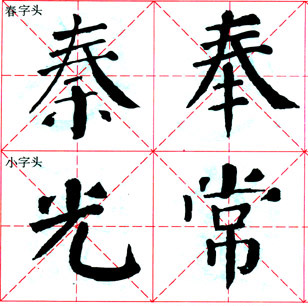
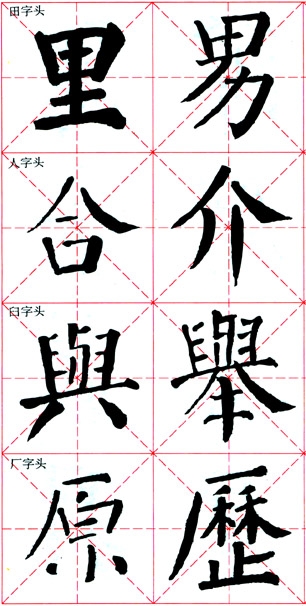
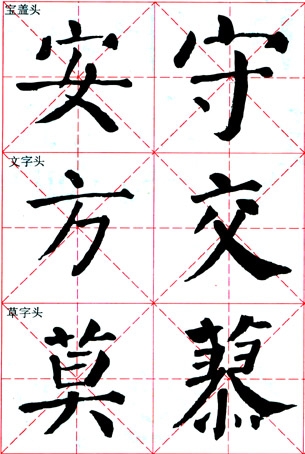
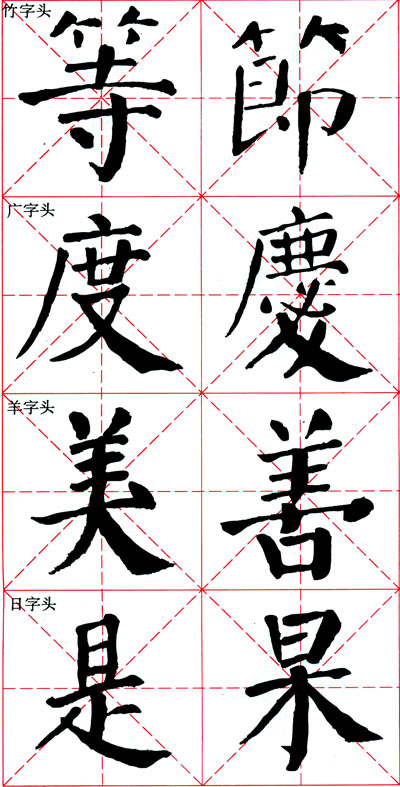
(2) Changes in the left radical
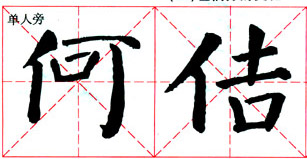
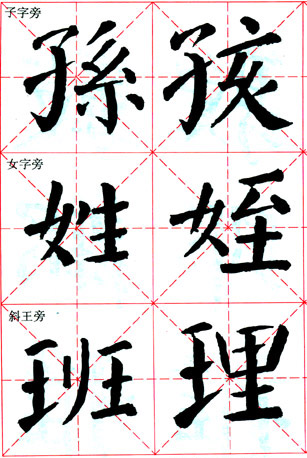
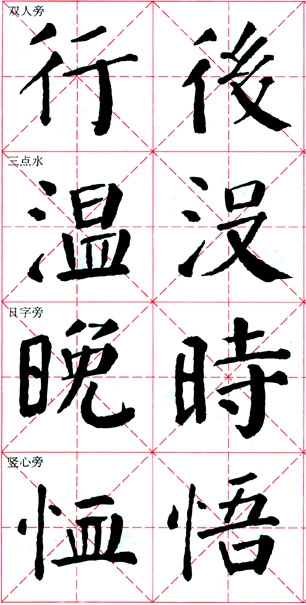
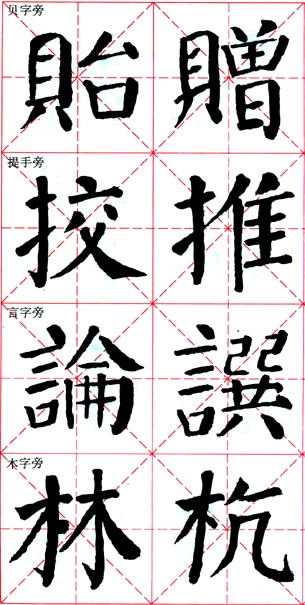
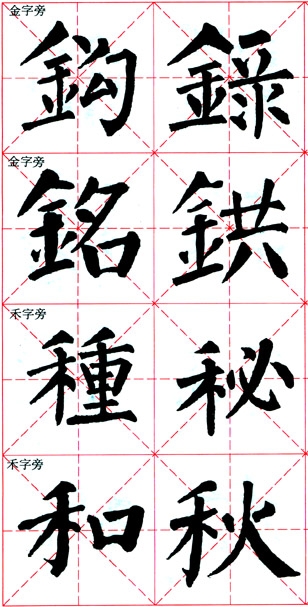
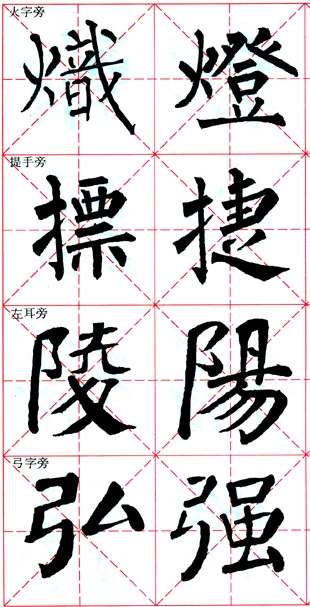
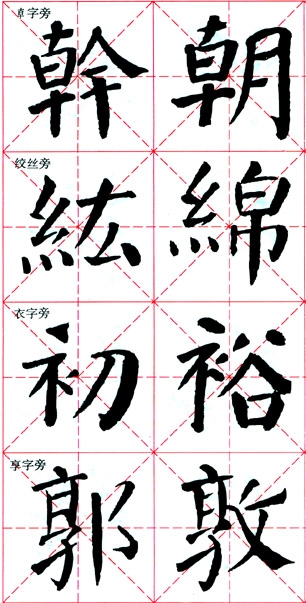
(3) Changes in the right radical
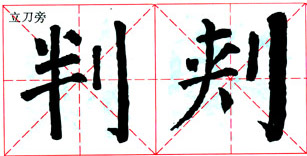
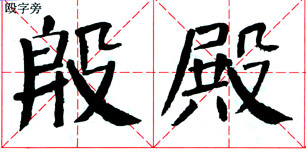
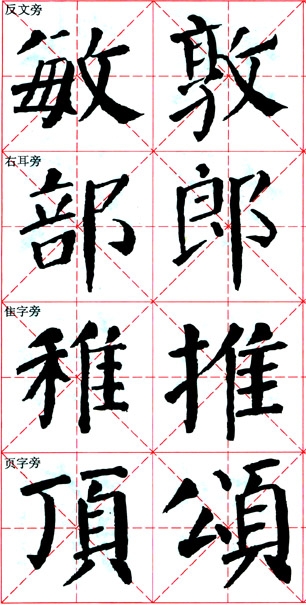
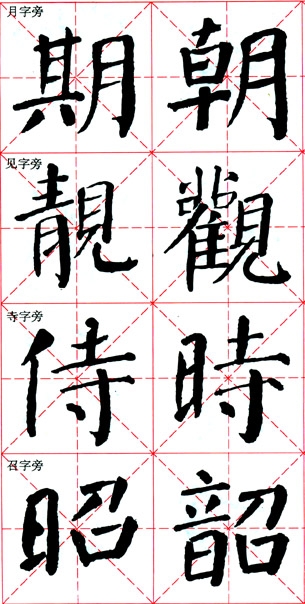
(4) Changes in the word box
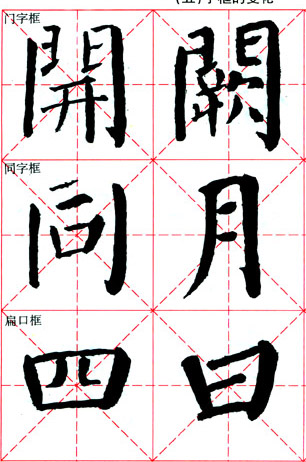
Chapter 4 Structural Analysis: Changes in Unique Fonts
We practice strokes and radicals to prepare for writing Chinese characters well. On this basis, to write Chinese characters well, we must master the structure of the characters. The ancients had various discussions on the structure of characters. Here, we summarize the structure of various characters in "Yan Qin Li Stele" according to the principle of simplicity and ease of learning. They are divided into single-type characters, combined characters, etc., for beginners to understand, analyze, and practice. .
1. Changes in unique fonts
The single-faced characters of Yan type are large or small, long or flat, and the morphological changes are very abundant, and the single-faced characters with few strokes are usually thicker and heavier.
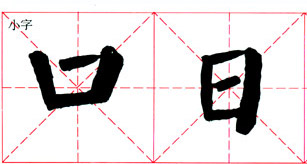
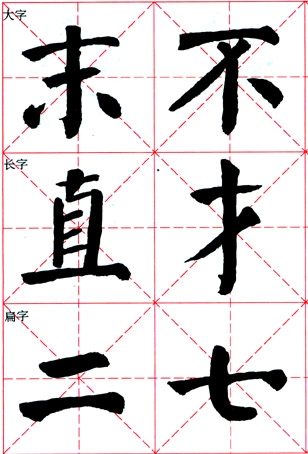
Second, the change of the font
Yan-type combined characters are of different shapes and colorful, so beginners must carefully trace the original work, and learn to think, analyze and arrange the center point of the characters.
(1) Left and right structure
The characters of the left and right structures need to pay attention to their respective widths, lengths, heights, etc., as well as the connection between the two parts, so that the two can be organically unified.
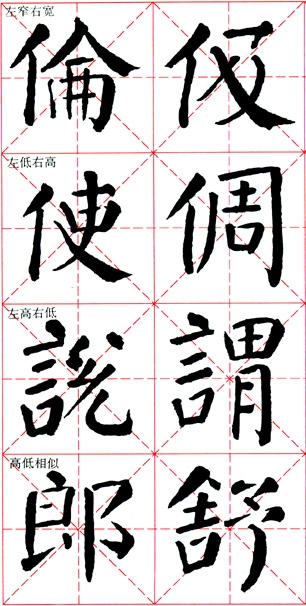
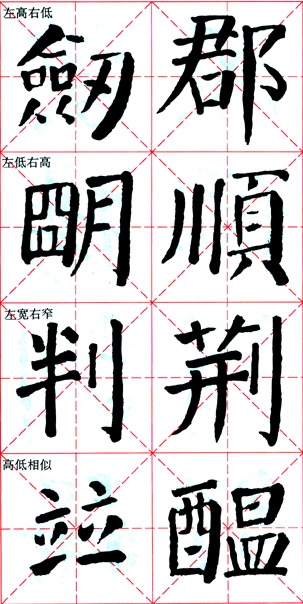
(2) Upper and lower structure
The characters of the upper and lower structures must pay attention to their respective widths, lengths, etc., and also pay attention to the connection between the upper and lower parts, so that the two parts are organically integrated.
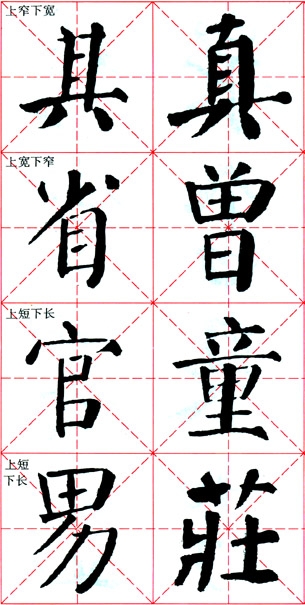
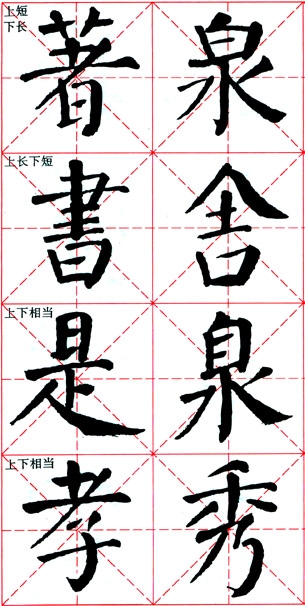
(3) Left-middle-right structure
Since the left, middle and right structure is in three-part rows, it is easy to write too wide, so the width of each part should be controlled to avoid crowding each other, and attention should be paid to the differences in the length, width, position, etc. of the three parts and the organic connection of the three parts .
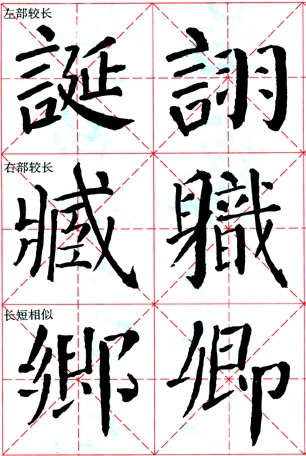
(4) Upper, middle and lower structure
Because the upper, middle and lower structure is in a three-part vertical row, it is easy to write too long, so the length of each part should be controlled to avoid crowding each other, and attention should be paid to the length, width, and organic connection between the three parts.
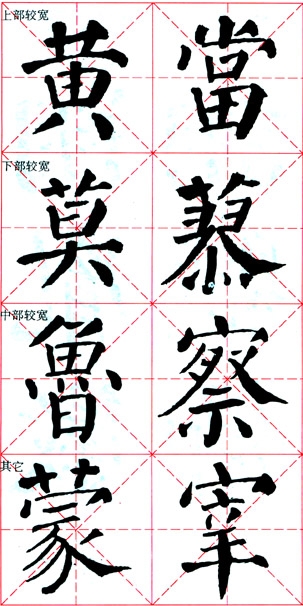
(5) Surrounding structure
The surrounding structure should pay more attention to the close connection between the surrounding part and the surrounded part, otherwise it is easy to write the characters, and the surrounded part should be moved closer to the surrounding part. In addition, due to the opening of Yan body knots, the enclosing part should be full (such as the bottom of the walk and the "mouth" are arched outwards).
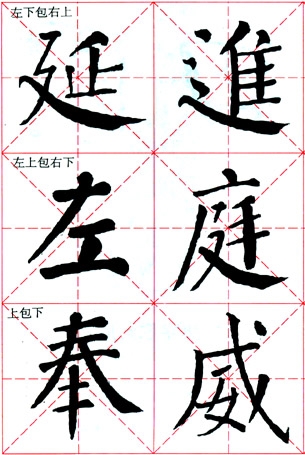
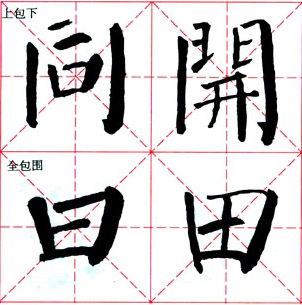
Chapter 5 Appreciation of Collected Sentences of "Yan Qin Li Stele"
Copying the rubbings is the only way for beginners to learn calligraphy, but if you want to be consistent with the rubbings, this is not an overnight effort. It requires the beginners to keep facing, silently, and back. And the practice of collection of calligraphy provides an excellent opportunity for beginners to come back. The so-called collection of characters is to select some Chinese characters from the rubbings and form verses and couplets for practice. This is not only for beginners to copy, but also as a reference material for creation.
